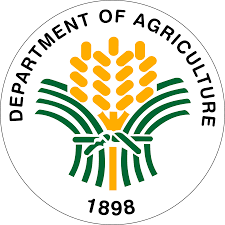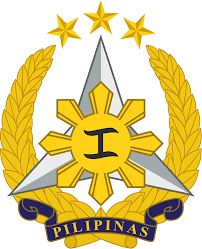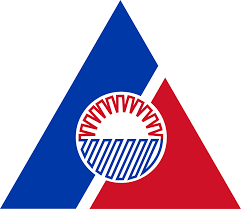UCSP REVIEWER
1/164
There's no tags or description
Looks like no tags are added yet.
Name | Mastery | Learn | Test | Matching | Spaced |
|---|
No study sessions yet.
165 Terms
sociology + political science
political organization
political science + anthropology
cultural institution
anthropology + sociology
social group
social aggregates
people in the same place at the same time
social categories
share social characteristics
e.g- men, women, kids
groups
collection of people
not permanent
institution
functioning entity
always permanent
primary group
small
high level of intimacy
personal relationship
frequent interaction
primary group
is a small social group characterized by close, personal relationships and frequent interactions, often fostering emotional connections.
secondary group
large
less intimate
less interaction
members accepted on parameters set by group
accepted based on what they can do for group
primary group
examples: family, close friends, work teams
secondary group
examples: classmates, coworkers, professional organizations
reference group
influences behavior and attitude (member or not)
used for self-evaluation and comparison.
reference in group
feel sense of identity here
reference in group
A group where individuals find a sense of belonging and personal identity, often comparing themselves to others within the group.
reference out group
hostile towards this
reference out group
A social group with which an individual does not identify, often leading to feelings of rivalry or hostility towards its members.
cultural-social-political institutions
marriage, households, kinship
marriage
publicly recognized
social and legal union
accords a child full birth status rights
common to normal member of society
marriage
A legally and socially recognized union between individuals, often resulting in the establishment of a family and conferring various rights and responsibilities, including full birth status rights for children.
household
consists of one/more people living in a housing unit
family constitute households or households built around families
household
A group of individuals living together in a single dwelling, often related by blood or marriage, sharing resources and responsibilities.
kinship
social institution
refers to relations formed between members of society
explains nature and reason for formation of different types of bonds
kinship
A fundamental social structure that defines interpersonal relationships and obligations among individuals within a society, often determined by blood, marriage, or adoption. It serves to establish networks of support and aid in resource sharing.
consanguineal kinship
based on descent/ blood relation
imaginary and assumed relations
consanguineal kinship
A type of kinship that arises from biological relationships, where individuals are connected through blood ties. This form of kinship emphasizes the importance of genetic inheritance and familial relationships.
affinal kinship
based on marriage
affinal kinship
A type of kinship that is formed through marriage and creates bonds between families, extending the network of relationships beyond blood ties.
kinship
system of social relationship based on blood/ marriage
considers both biological and nonbiological
descent
socially existing recognized based on blood only
considers only the biological
unilineal and cognatic
kinship
refers to the network of social relationships that connect individuals through blood or marriage, encompassing both biological and nonbiological ties.
descent
The way in which members of a society trace their lineage and inheritance, usually categorized into matrilineal or patrilineal systems. It defines how families and social groups are organized through blood relations.
unilineal
a system of tracing descent through one gender only, either male or female.
cognatic
A system of tracing descent through both maternal and paternal lines, allowing for a more flexible understanding of kinship and inheritance.
descent groups
related by descent by a common ancestor
descent groups
that consist of individuals who are connected through kinship to a shared ancestor, often forming the basis for social organization and cultural identity.
lineage
related by a common ancestor
lineage
descent group that traces its ancestry through one line of relatives, often used to determine inheritance and family ties.
cognates
common origin
cognates
that have a common etymological origin in different languages, often sharing similar meanings and forms.
fictive kinship
acting as if someone is kin when they are not
fictive kinship
is a social relationship that mimics family ties without a biological connection, often used to strengthen bonds in communities.
patrilineal
male descent
matrilineal
female descent
privatization
occurs when a government agency provides public services is converted into a privately owned organization
privatization
the transfer of ownership of a business or public service from the government to private individuals or organizations.
institution
a large important organization that has a particular purpose
institution
an established organization or foundation, especially one dedicated to education, public service, or a cultural purpose.
social institutions
devoted of the promotion of a particular cause or program
(e.g family, economies, religion, education, state)
cooperatives
made up of people w/ common interest who agreed to work together for their betterment
cooperatives
associations of individuals who collaborate to meet common economic, social, and cultural needs, often through jointly owned enterprises.
civil organizations
groups or organizations working in the interest of the citizens but operating outside of the governmental and business sectors
examples of non-state institutions
banks, stockmarket, trade unions, cooperatives, transnational advocacu groups, development agencies, civil organization
civil organization
an entity that advocates for the interests of citizens and operates independently of government and business sectors.
development agencies
promote progress by engaging in progress, policy making dialogue

Department of education

department of interior and local government

philippine national police

Department of public works and highways

department of agriculture

department of agriarian reform

Armed forces of the philippines

Commission on Higher Education

overseas workers welfare administration

World Bank

international monetary fund
stock market
A collection of markets where shares of publicly traded companies are bought and sold, reflecting the performance and value of those companies.
transnational advocacy groups
groups or networks that gives powerless constituents a voice on domestic and international law making
transnational advocacy groups
Organizations that operate across national boundaries to influence policy and promote social change, advocating for issues affecting marginalized communities.

department of trade and industry

Bureau of Customs

Department of Science and Technology

department of environment and natural resources

technical education and skills development authority

social security system

civil service commission

commission on human rights

department of labor and employment

Government service insurance system
sorority
sister
fraternity
brother
progenitor
common ancestor
the 2 national banks in the Philippines
Land Bank and Philippine National Bank
3 types of authority
traditional
charismatic
rational-legal authority
traditional authority
hereditary authority( Monarchy)
passed through bloodline of leaders
traditional authority
A type of authority based on established customs and traditions, typically passed down through generations.
charismatic authority
drawn from persons charisma
capacity of a leader to attract and retain loyal followers through qualities
charismatic authority
is a form of leadership where authority is derived from the personal allure and exceptional qualities of an individual leader, enabling them to inspire and motivate their followers directly.
rational-legal authority
drawn from legal and constitutional mandates that are usually agreed upon
rational-legal authority
is a type of authority that is based on established laws and regulations, where leaders are given power through a legal framework that is accepted by the governed.
ritual kinship
baptism, confirmation
compadre system
godchild godfather relationship to strengthen ties between family
compadre system
is a practice in which individuals enter into a mutual bond of kinship through the act of having godparents for their children, enhancing social and familial connections.
examples of ritual kinship
baptism, and confirmation
nuclear/ conjugal family
composed of one or two parents and their child/ children
extended/ consanguine family
composed of parets and children plus other members of their kin
kin
group with common ancestry or marriage
reconstituted
members of family differ from the typcal members of a nuclear or extended family
female-headed transnational family
a family structure where a woman, often a primary caregiver, maintains familial ties across national borders, typically involving migration.
example of reconstituted
secondary group
unique form of social group that tends to be formally organized or highly structured based on predominantly impersonal or role based interactions